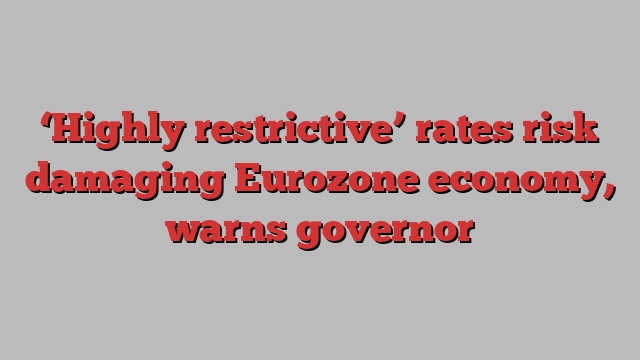
Unlock the Editor’s Digest for free
Roula Khalaf, Editor of the FT, selects her favourite stories in this weekly newsletter.
Inflation could be on track to meet the European Central Bank’s 2 per cent target in the first half of 2025, boosting the case for policymakers to cut “highly restrictive” interest rates faster than previously anticipated, Greece’s central bank governor has said.
Yannis Stournaras said he backed two more quarter-point rate cuts this year, the first at the ECB’s meeting next week in Slovenia and another one at its final gathering of the year in December, after most recent data on economic activity and inflation was much softer than expected.
“Even if we have one cut of 25 basis points now and another one in December, we will be back to just 3 per cent — still in highly restrictive territory,” Stournaras told the Financial Times, adding that there is a likely case for further easing of policy in 2025.
Stournaras pointed out that “[economic] confidence indicators are just between life and death” and “inflation is falling faster compared with our [the ECB’s] September forecast”, adding: “The most recent data suggests that perhaps we get to 2 per cent in the first quarter of 2025.”
In September, Eurozone inflation fell to 1.8 per cent — the first time it was below the ECB target since 2021.
However, consumer prices are expected to rise faster in the final months of the year due to statistical base effects such as the phasing out of lower energy prices from annual comparisons.
The ECB is targeting a 2 per cent rate “over the medium term”, with strong wage growth and high services inflation still a concern.
The ECB embarked on an easing of its restrictive monetary policy in June and cut rates again in September. Should it lower rates from 3.5 per cent in October, it would signal a departure from the path of quarter-point rate cuts at every other meeting.
The Greek central bank chief, a former academic economist who is one of the longest-serving members of the 26-strong ECB governing council, argued that the medium-term inflation trend suggests there is room to cut at a swifter pace.
“If inflation continues the downward path towards the 2 per cent target, why not cut in every meeting?” he said.
ECB president Christine Lagarde hinted last week that a cut in October has become more likely, telling MEPs in Brussels that rate-setters will take bigger-than-expected falls in inflation into account.
Financial markets are now pricing in two more rate cuts this year and predict that interest rates will fall to around 1.7 per cent in the second half of next year.
Most estimates put the “neutral” interest rate that neither stimulates nor slows down economic activity at around 2 per cent.
According to Stournaras, there are few members of the governing council with fundamentally opposing views on the ECB’s near-term policy pathway.
“We all look at the same data, and it suggests that we’re heading to achieving the 2 per cent [inflation target] in mid-2025 if not earlier,” he said.
“Otherwise, we risk downgrading the economy a lot and risk undershooting the inflation target,” he said, adding that this would mean returning to “the old problem” of too little inflation. “Nobody wants that.”
While the ECB may have to step up its easing of monetary policy, Stournaras said the central bank was not already behind the curve.
“We have to act gradually,” he said, adding that economics was a “social science” rather than “quantum mechanics” and policymakers had to take decisions facing massive uncertainty. “Nobody knows what will happen tomorrow.”